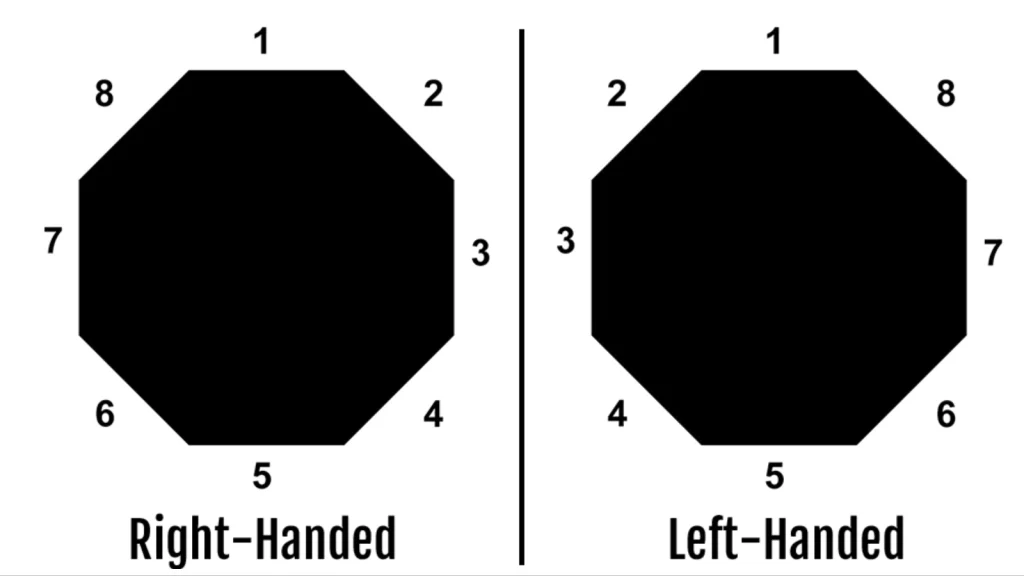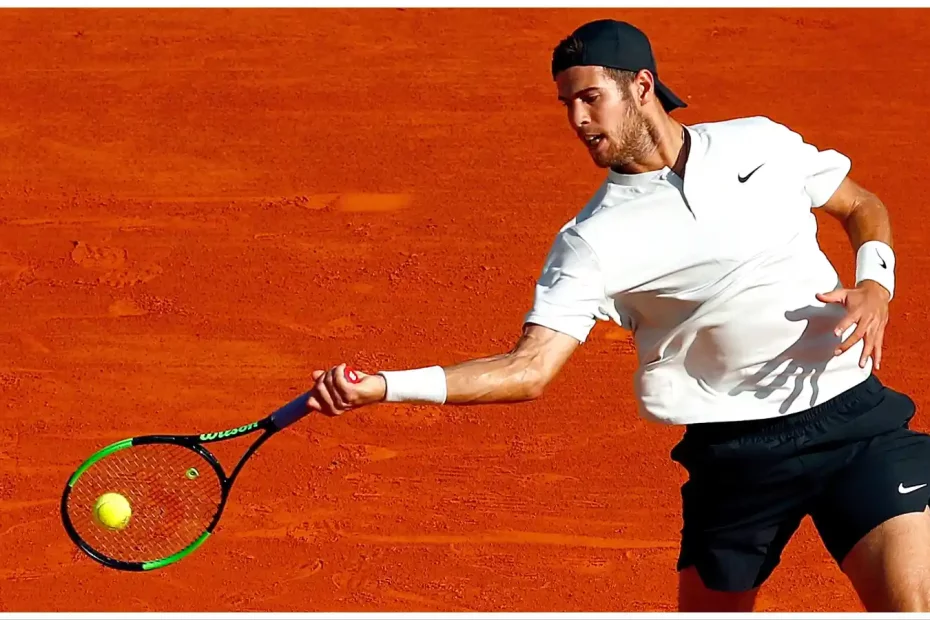There are two main shots in tennis. The first is the forehand and the second is the backhand. Some prefer to use the first as a weapon, while others prefer to use the latter as a weapon. In this article, we cover the first one. Professional tennis players use the forehand to strike the winner during a game. It is their favorite shot to use in those situations. Forehands can vary from player to player, some use a powerful forehand, while some use a topspin stroke. To use any of these techniques it is important to emphasize the type of tennis forehand grip that the player is using. The playing style of a player will determine what kind of grip he or she will prefer to use. To more about the tennis forehand grip in detail, keep on reading the article.
Holding A Tennis Forehand Grip
The grip of the tennis racquet is in the form of an octagon, or it has eight sides. Each of these sides is known as a “Bevel”. For right-hand users, the bevels are numbered from 1 to 8 in the clockwise direction, while, for left-hand users, it is numbered from 1 to 8 in the counterclockwise direction. The method for holding the grip is to hold it tightly so that the player can use the strokes smoothly. The thumb and the index finger form a “V” shape around the bevels, with the other fingers, closed like a wrap.

What Are The Different Forehand Grips?
There are four different types of forehand grips – continental, eastern, semi-western, and western. Players with less experience or beginners will prefer to use the eastern or semi-western. The continental will be used by players who prefer to hit more flat shots than heavy spins. The Western is for professionals who like to use the heaviest spin possible. Each type will be explained in a bit.
To improve the tennis forehand grip, proper training is required. So here are the top 7 tennis academies in Florida, which provide the best training in tennis – Top 7 Best Tennis Academies In Florida in 2023
Continental Grip
Continental Grips are mainly used for hitting volleys and serves. In this grip, the heel of the hand and the knuckle of the index finger lie on the bevel 2. This grip was mainly used during the wooden racquet era. Nowadays, continental grips are rarely used as it becomes difficult to hit topspin with them.
Eastern Grip
Eastern Grips are a bit different from continental grips. Instead of placing the heel of the hand and the knuckle of the index finger on Bevel 2, it is placed on Bevel 3. It is great for flat shots, with a bit of topspin. The disadvantage is that it is not much effective for hitting the ball at a higher level. Experienced players can change from eastern grip to continental grip in-between matches.

Semi-Western Grip
In semi-western grips, the heel of the hand and the knuckle of the index finger lie on bevel 4. Semi-Western Grips are the most used forehands grip in tennis today because it allows the professionals to use topspin while hitting aggressive shots, during high as well as low balls. The only drawback of this grip is that it becomes difficult for players to hit low balls near the net.
Western Grip
In western Grips, the racquets are held at 180 degrees, which means that the heel of the hand and the knuckle of the index finger lie on bevel 5. Professionals who prefer clay courts over others, use this grip as it gives heavy topspin to high-bouncing balls. On quicker courts, this becomes difficult to hit as there are low-bouncing balls.
What Is the Best Forehand Grip For Beginners?
The best forehand grip for young beginners is the eastern grip. It is because it is easy to hold and can be used to hit flat shots comfortably. With a little bit of experience, they can shift to the semi-wester grip. The semi-western grip is the best for adult beginners. Continental grip and western grip are not preferred because continental grip has become a bit old school, and as for western grip, beginners will higher risk of arm and shoulder injury if using this grip.
What Grips Should Be Used For Topspin and Flat Shot?
For topspin, semi-western and western grips are preferred over the others. These two grips will help the player in striking the ball cleanly and also do the topspin in the process. Grips that are more leaning to the western position, make it difficult to hit a ball without topspin. On the other hand, when in need of flat shots, eastern grips are the best. Eastern grips can also provide topspin as shown by Bjorn Borg, but for that, extreme grips are needed.
What Is Better: Loose Grip Or Tight Grip?
For beginners, their coaches will tell them to hold their racquets tightly. It will make them get control over their racquet and make them more consistent by reducing errors. On the downside, the movement speed of the racquet reduces and there is an increased chance of getting a tennis elbow. The best thing to do is to practice until it makes you perfect. But this makes us question whether a loose grip is better or not. A loose grip will reduce the risk of injuries, while also increasing the shot speed. But errors may happen more often and may cause the racquet to release accidentally. Ultimately, the best thing one can do is to hold the racquet tightly and just before hitting the ball, loosen the grip.
For better knowledge of tennis, you learn about the tennis level through this link – What Are The Tennis Levels? Know All About NTRP, UTR, ITF, and ATP (WTA)
FAQs on Tennis Forehand Grips
Q: How many types of forehand grips are in tennis?
Ans: There are four different types of forehand grips – continental, eastern, semi-western, and western.
Q: What is a bevel?
Ans: The grip of the tennis racquet is in the form of an octagon, or it has eight sides. Each of these sides is known as a “Bevel”.
Q: What are continental grips used for?
Ans: Continental Grips are mainly used for hitting volleys and serves.
Read More – What Are Tennis Tiebreakers and How Do They Work? – A Complete Guide
